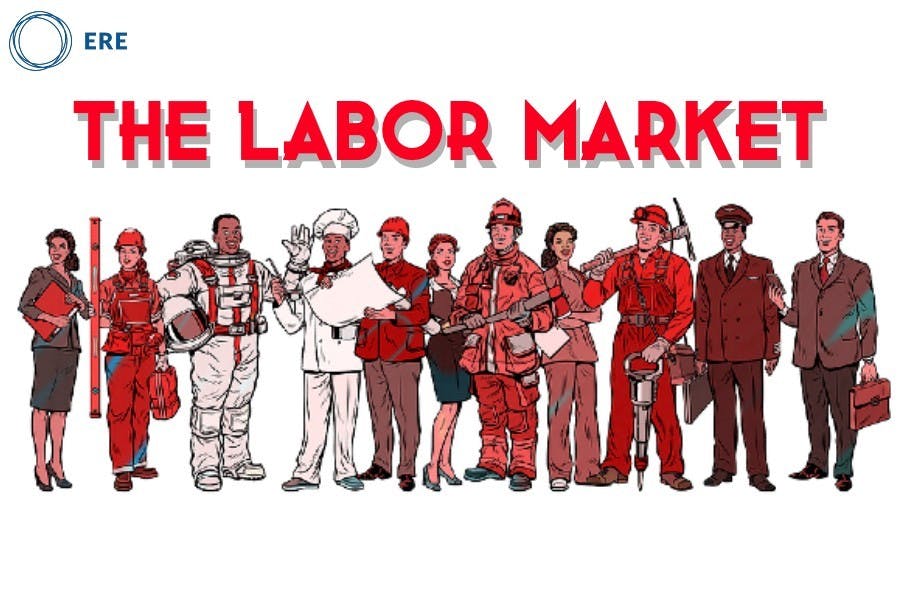The labor market is creating some odd statistics. There are over 13 million people unemployed because of the pandemic, and the unemployment rate stands at 8.4%. But there were over 6 million job openings in July. That’s about the same number as there were at the start of the year, before the pandemic shut down the economy.
Amazingly, 1.2 million more people quit than were laid off, adding to the number of job openings. The National Federation of Independent Business reported that a third of small businesses had unfilled job openings, and over a quarter of business owners reported few or no qualified applicants for their open positions. Indeed, 80% of construction firms report they are having a hard time filling positions. The corollary effect of this situation has been to drive up wage costs (earnings) for at an annual rate of 10%.
So what is going on, and will this continue?
First, the situation reflects an improving economy. Workers are more likely to quit their jobs in an upswing because they have other options. But the return to the status quo ante reflects a broader problem with the labor market. Simply put, the labor force participation rate has been falling. The rate for men has been trending downward for nearly 60 years, from 86.7% in 1948 to about 70% today. For women, the rate rose until 2000, increasing from 32% to over 60%, but has since declined to 57.6%.
The Old and the New
The primary cause is aging of the population. Barely 10 years from now all baby boomers will be older than 65. By 2030, they will outnumber children. As a result, 1 in 5 Americans will be of retirement age.
At the same time, Americans are having fewer children. Every state now reports birth levels below historical peaks, with half of states reporting birth counts at least 30% below previous highs. Deaths now exceed births in nearly half of U.S. counties. Overall, births fell to 3.8 million in 2019, while deaths jumped to 2.8 million. The difference is now less than 1 million.
Compounding the problem is that there has been no change in the retirement age. Even though people live longer now, an average of 78.5 years (compared to 64.6 in 1948), they continue to retire around the time they reach 60. The average retirement age in the United States is 59.8 years. Incredibly, over 63% retire between the ages of 57 and 66. The situation would be even worse if the 2008-09 recession hadn’t interrupted the retirement plans of millions of baby boomers. Today nearly 1 in 3 people aged 65 to 69, as well as 1 in 5 aged 70 to 74, are in the labor force.
The other source of new workers, immigration, also continues to decline. The number of legal immigrants becoming permanent residents peaked in 1991 at 1.8 million and has since declined to about 600,000. Immigrants tend to be younger so they may delay some of the shrinkage of the labor force. Immigration adds more to the millennial (born between 1981 and 1996) population than to any other category. But the benefit will be short-lived since the millennial population is estimated to peak in 2033. After that, age and mortality will likely outweigh any gains from immigration.
In short, the United States now has a population growth rate of just 0.48%. The last time the rate was this low was during the flu pandemic of 1918 to 1919.
What Can Recruiters Do?
With 2.5 unemployed workers for every open job, it may appear that there are plenty of workers around. But as the statistics above show, the reality is very different and only getting worse. The number of available workers will only continue to decline. And the size of the gap between available workers and open jobs strongly suggests that for many types of jobs, the talent supply chain is broken or that there’s a disconnect between demand and the skills being developed in the workforce.
Automation and AI may eventually help close the gap, but when that happens is anybody’s guess.
With an aging workforce, one option is to reskill workers. Some efforts are being made to do so, such as the Job Data Exchange (JDX) project started by the U.S. Chamber of Commerce. JDX is designed to help employers move to a competency-based approach to hiring, instead of relying on degrees or educational credentials. JDX collects hiring data and makes it available to education and workforce partners that are helping students and job-seekers prepare for the workforce. The goal is to send better signals of skill requirements from the business community and to help job-seekers find opportunities based on skills and competencies.
At the local level there are many programs intended to help employers close the supply-demand gap. For example, EmployIndy in Indianapolis provides employers with a platform for data-sharing on jobs and using information from the unemployment system to match up applicants. Various industry-specific programs, such as the Health Profession Opportunity Grants (HPOG) provide education and training that targets competencies and skills in demand. Many community colleges are also pivoting to providing students with non-credit workforce training instead of degrees.
These are small steps, but we need much bigger ones. The United States spends barely 0.1% of GDP on programs intended to help adults find a new job, a quarter as much as the average among developed countries. With deficits in the trillions there may be little appetite to increase spending, but this is one area where it would produce major long-term benefits.
